An expert guide on where to stay in Cornwall whether you want to surf, sail, hike or cycle, or simply laze on a beach
The novelist and poet D. H. Lawrence once wrote that Cornwall is “like being at a window and looking out of England.” In this westerly point of mainland England, you will find a wild north coast of rugged cliffs and golden beaches, a calm south coast of sheltered waters and fishing villages, and dramatic moors in between. But Cornwall is not just a geographic microcosm; it also speaks to England’s politics.
Once a thriving industrial hub, Cornwall’s coast is still littered with old engine houses that once powered its tin and copper mines. As the industry declined, Cornwall had to reinvent itself. Today, it’s one of England’s most popular destinations thanks to its superb beaches but also its premier surfing, sailing and hiking.
To help you decide where to stay based on activity, we have teamed up with Aspects Holidays who specialise in Cornwall cottages.
Where to stay in Cornwall
The following activities are grouped into water-based and land-based. In each case, we suggest where to stay in Cornwall depending on what you most want to do. We also suggest a good alternative to help you find the optimal spot for more than one activity.
Surfing: Fistral Beach, Newquay
Fistral Beach in Newquay is one of the best surf spots in the UK. The wide, sandy beach is backed by dunes and faces the rugged Atlantic. Like many Cornish surfing beaches, Fistral’s west-facing direction exposes it to large swells, perfect for year-round surfing.
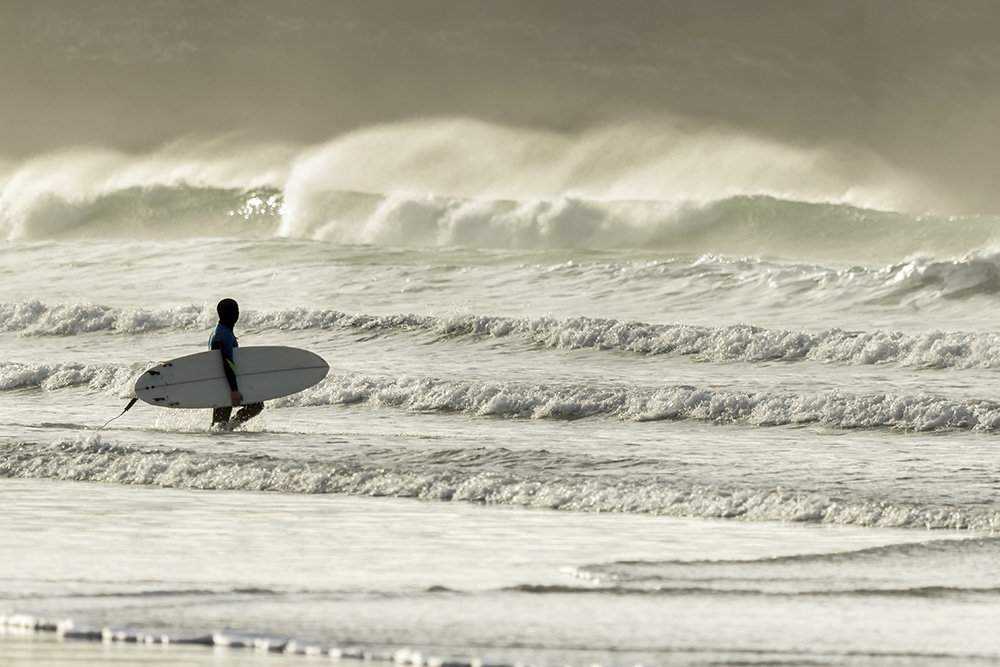
Though often busy, the 750m-long beach accommodates surfers of all levels. Advanced surfers usually gather at the northern end of Fistral, which is more exposed and promises steeper, faster waves. The Cribbar, Newquay’s spectacular big wave, is a draw for surfers all over the world.
Those less experienced should stick to the southern end of Fistral, which is sheltered somewhat by the Pentire headland. There are some excellent surf schools nearby which provide lessons for beginners.
The beach is a few minutes’ walk from the town centre and close to a range of Newquay cottages. Freshen up and head back out for dinner at Rick Stein or watch the sunset with a drink at the popular Fistral Beach Bar.
Alternative: Perranporth Beach or Polzeath Beach
Sailing: Falmouth
The maritime town of Falmouth has one of the deepest natural harbours in the world. Combined with a picturesque setting, sheltered waters and a sophisticated network of boat yards, marinas, sail makers and chandlers, it provides one of the UK’s best sailing destinations.
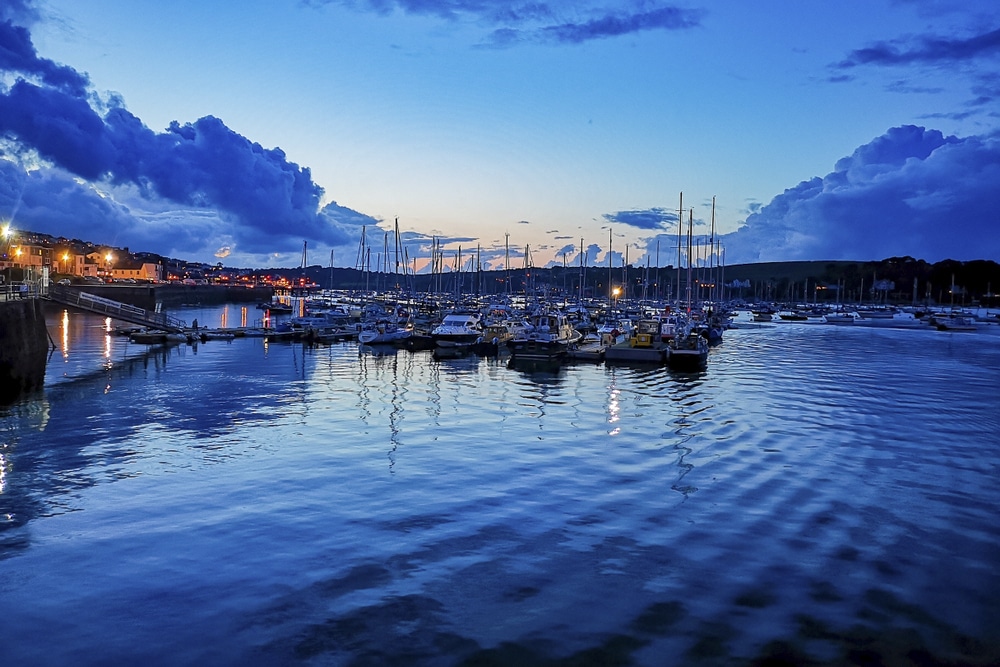
Aspiring sailors can take a range of courses, from RYA Level 1 to Advanced Seamanship. Those who just want to enjoy the scenery can book a day of sailing aboard a tall ship or a classic Cornish Gaff Cutter.
On land, the town itself has plenty to offer. The main promenade is perfect for an afternoon stroll and it’s well worth visiting Glendurgan Garden and Pendennis Castle as well as the Maritime Museum.
Alternative: Fowey
Coasteering: Praa Sands
Coasteering has been described as everything you weren’t allowed to do by the sea when you were a child: scrambling up rock faces, exploring caves, leaping off ledges and diving into the sea. In essence, it involves exploring a coastline at sea level. Think nature trail with added adrenaline.
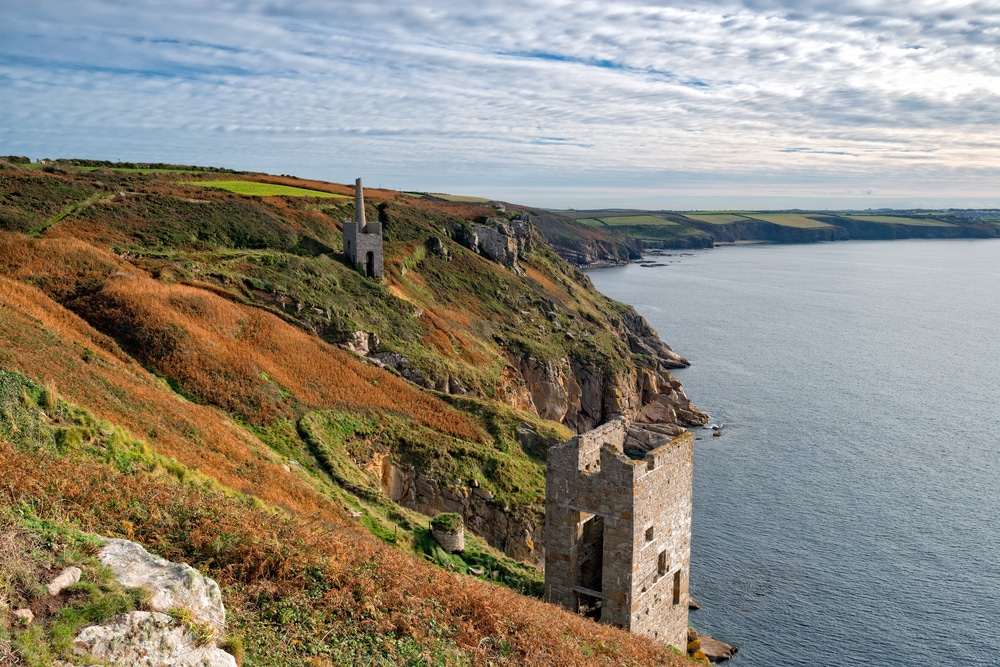
Coasteering originated among surfers who would scramble along coastlines in search of the best surf spots and later developed into its own sport.
Cornwall has a wealth of options on both the north and south coast as well as inland quarries. The stretch from Praa Sands, past Rinsey to Porthleven, is particularly dramatic. Thrillseekers should ask about the engine houses of Wheal Trewavas mine as you may be able to coasteer into the old engine shaft!
Back at sea level, look out for herring gulls, cormorants and shags. If you’re lucky, you may even see a seal or two.
Alternative: Via Ferrata Cornwall
Paddleboarding: St Ives
With its wealth of sheltered coves, Cornwall is a fantastic destination for stand up paddleboarding. Beginners should start at Carbis Bay Beach, a mile from St Ives. Unlike Fistral above, Carbis Bay doesn’t face west and is largely protected from the Atlantic swells. Expect golden sand and glassy water, but do bear in mind that this is the open sea and conditions can change dramatically depending on the weather.
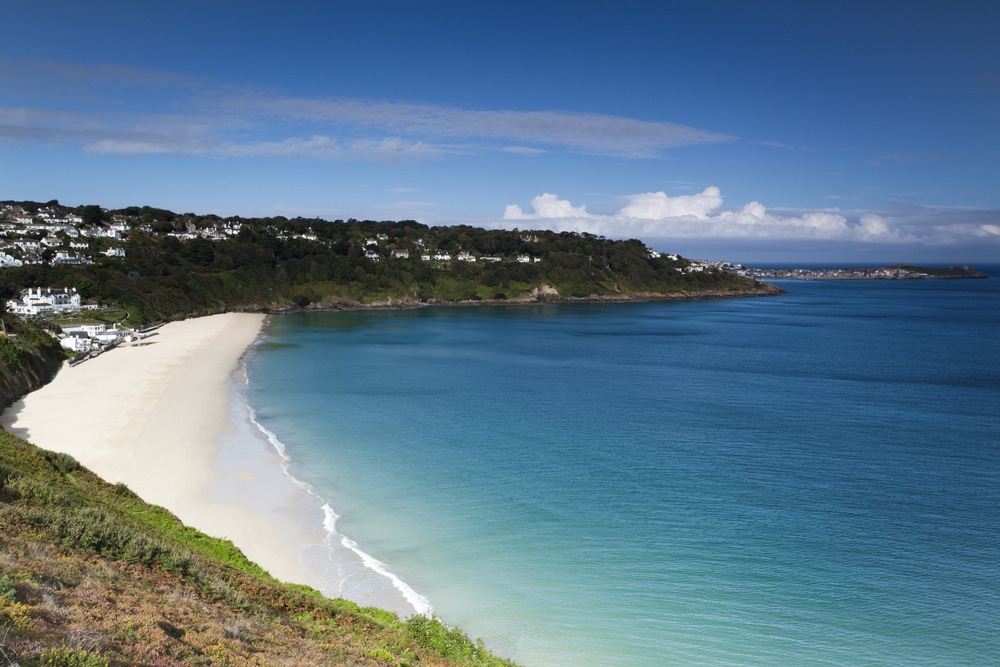
A range of guided tours are available, from beginner classes to ‘clinics’ designed to correct poor technique. You can choose to head into the open water (expect rougher swells) or explore the coastline on a gentler jaunt.
There is much to do in Carbis Bay, but we advise staying in one of the cottages in St Ives and walking or driving in. The larger town will have more choice, especially in shoulder and low season when some bars and restaurants close.
Alternative: Porthcurno Beach
Walking: The Lizard Peninsula
With jagged Atlantic cliffs, sweeping moorland, coastal castles and sandy coves, Cornwall is a walker’s paradise. It’s difficult to pinpoint exactly where to stay in Cornwall for the best walks, but you can’t go wrong with the Lizard Peninsula.
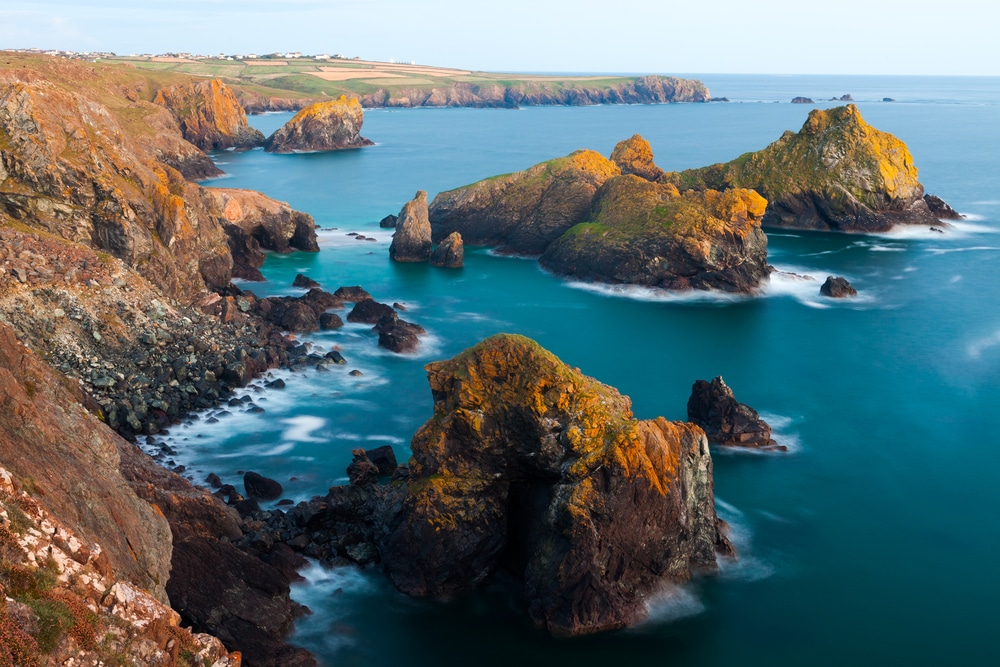
The Lizard Peninsula is the southerly tip of mainland Britain and the coast is accordingly rugged, hewn by the Atlantic. Clifftop walks abound, suitable for all abilities.
We recommend The Lizard coastal walk, a 7mi (11km) loop that takes in some of Cornwall’s most dramatic landscapes, from the far-reaching views at Lizard Point to the coastal idyll of Kynance Cove.
Alternative: St Ives to Zennor
Cycling: Penzance
Cornwall isn’t known for cycling in the same way as surfing, sailing and walking, but there’s plenty on offer for those on two wheels.
We recommend the Penzance cycling loop (70km, 870m elevation gain), which covers some of Cornwall’s – and the UK’s – most famous sights.
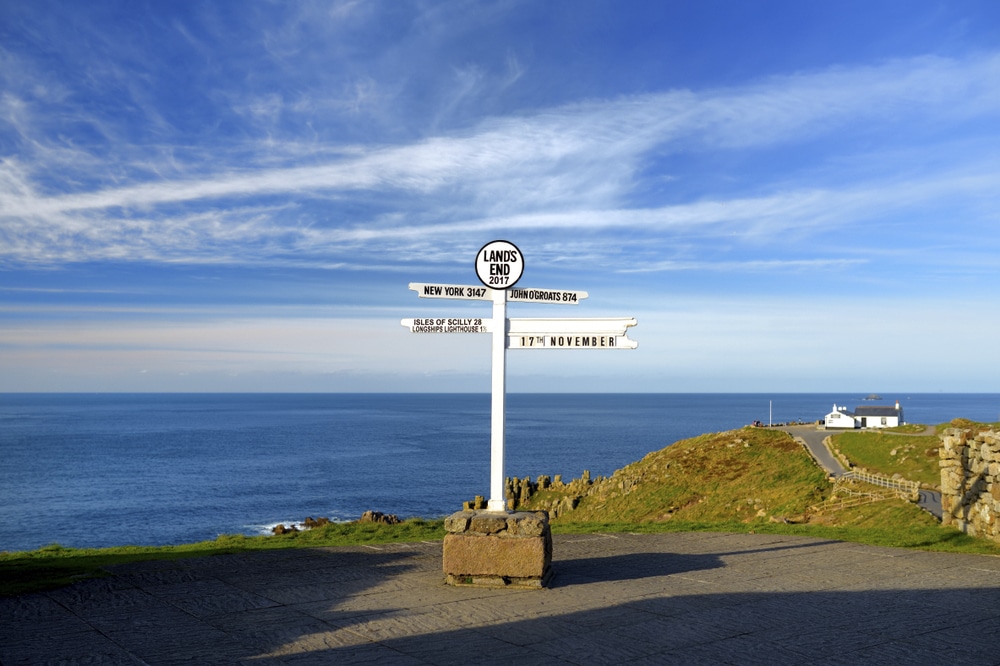
Starting from Penzance, it takes in the storybook village of Mousehole, the iconic landmark of Land’s End and the fairytale setting of St Michael’s Mount. It doesn’t go quite as far as St Ives, but can be easily extended.
Loop back, freshen up at one of the many comfy cottages in Penzance and then head to dinner at Michelin restaurant The Shore (booking is a must).
Alternative: Bodmin
Swimming: Porthcurno Beach
Cornwall is littered with pretty beaches, so it’s hard to choose just one but Porthcurno takes the crown. Consistently named one of the best beaches in the country, it has the requisite fine white sand, sparkling turquoise waters and a ring of rugged cliffs that shelter it from the elements.
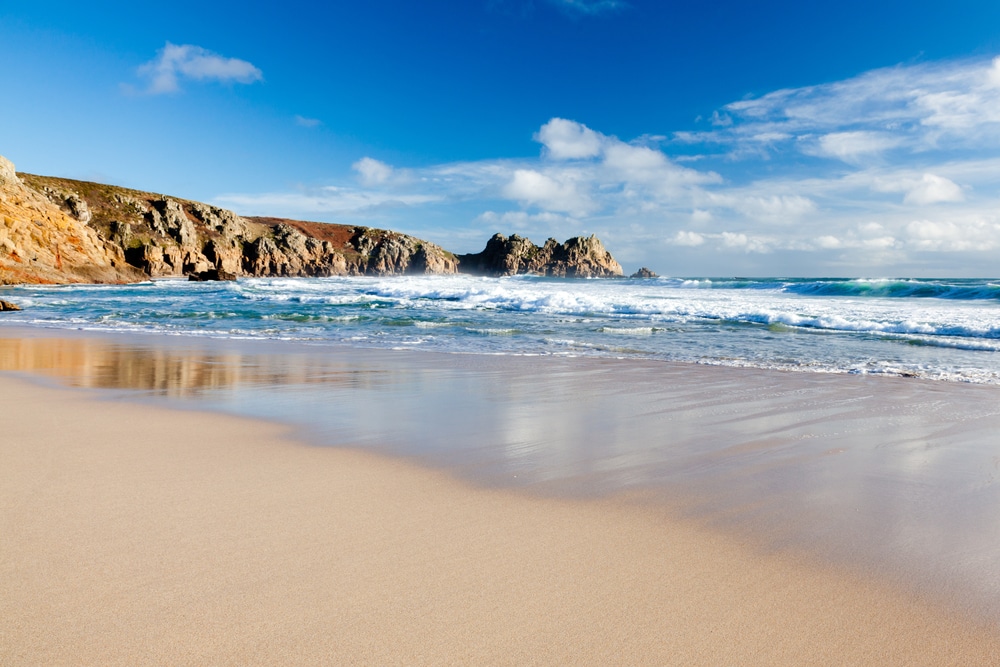
Up above is Minack Theatre, the renowned open-air theatre carved into the granite cliff. Catch a show or take a tour of the theatre outside of show times (advance booking is essential).
Arguably just as pretty is Pedn Vounder next door, a naturist beach that can be reached on foot at low tide. Just don’t get stuck or you’ll have a steep climb up back to Porthcurno.
Alternative: Carbis Bay Beach
Quirky culture: St Michael’s Mount
Cornwall has much to offer by way of quirky culture, from the Minack Theatre and Merlin’s Cave to the Lost Gardens of Heligan and the Eden Project. If we had to choose just one sight, it would be St Michael’s Mount.
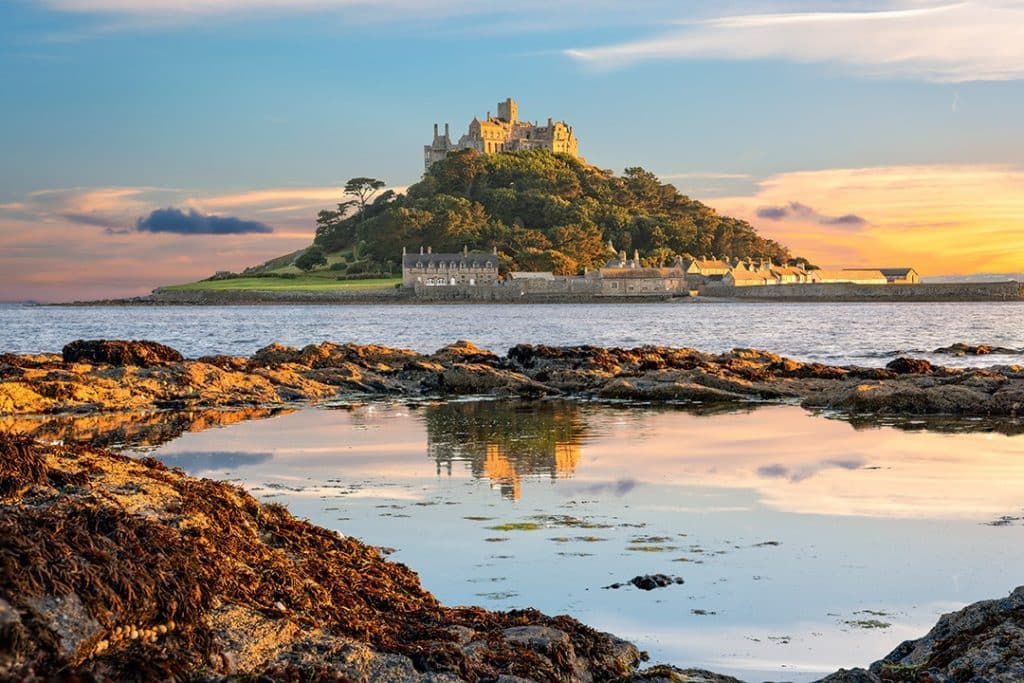
St Michael’s Mount is one of 43 unbridged tidal islands that can be reached from mainland Britain. During low and mid tide, a cobbled causeway emerges from the water allowing you to walk to the site.
Explore the medieval buildings and don’t miss the cliff-top gardens, home to an exotic mix of plants and shrubs thanks to the rock face above which acts like a heater.
Alternative: Porthcurno for Minack Theatre
Enjoyed this post? pin it for later…
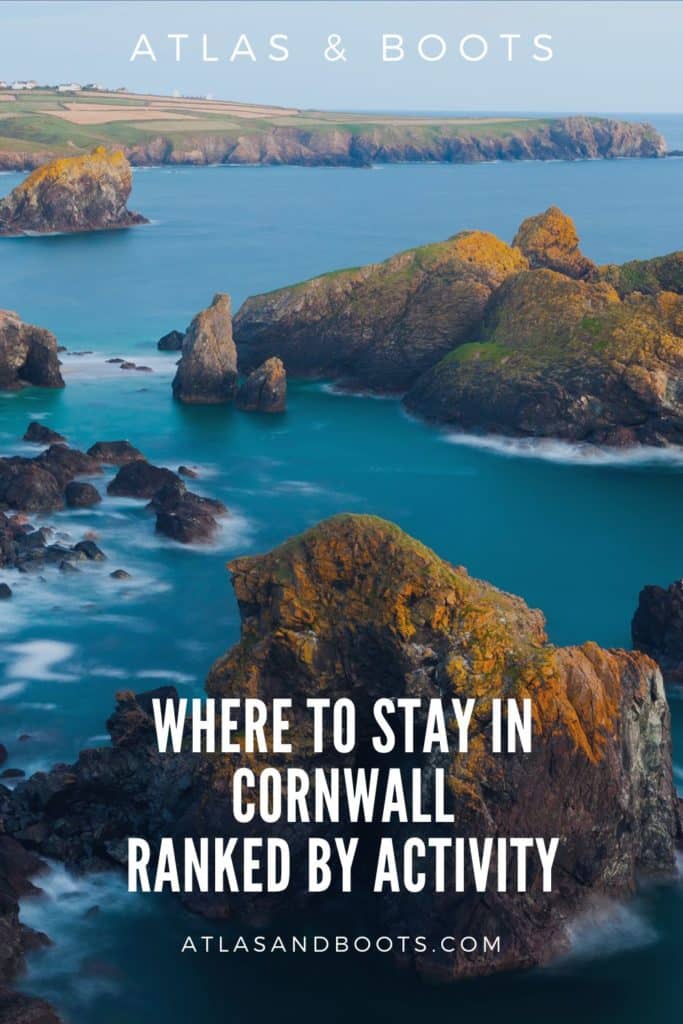
Lead image: Ian Woolcock/Shutterstock
[flexi-common-toolbar] [flexi-form class=”flexi_form_style” title=”Submit to Flexi” name=”my_form” ajax=”true”][flexi-form-tag type=”post_title” class=”fl-input” title=”Title” value=”” required=”true”][flexi-form-tag type=”category” title=”Select category”][flexi-form-tag type=”tag” title=”Insert tag”][flexi-form-tag type=”article” class=”fl-textarea” title=”Description” ][flexi-form-tag type=”file” title=”Select file” required=”true”][flexi-form-tag type=”submit” name=”submit” value=”Submit Now”] [/flexi-form]






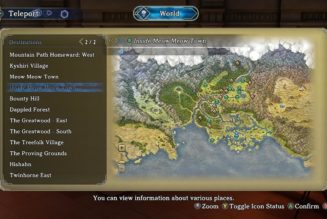



Tagged: Beaches, seas & oceans, travel blog, UK